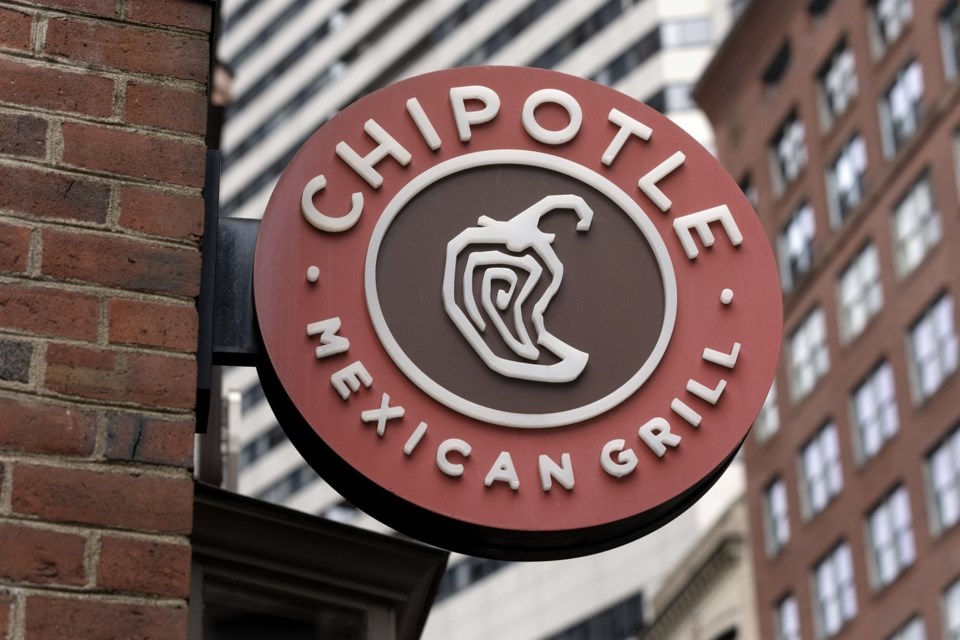Outbreaks of foodborne illnesses are pretty rare for well known restaurant chains, but they do happen.
This week, an outbreak of E. coli food poisonings linked to McDonald’s Quarter Pounder hamburgers has sickened at least 49 people in 10 states, including one person who died and 10 who were hospitalized.
McDonald's has halted the distribution of slivered onions and temporarily removed the Quarter Pounder from menus in multiple states.
Here's a brief history of some of recent incidents that sickened customers, roiled businesses and sometimes changed how food safety is regulated in the U.S.
Wendy's
Wendy's pulled lettuce from sandwiches in its restaurants in Michigan, Ohio and Pennsylvania in August 2022 after some people reported falling ill.
The Centers for Disease Control and Prevention said at the time that it was trying to determine whether romaine lettuce was the source of an E. coli outbreak that sickened at least 37 people and whether romaine used at Wendy’s was also served or sold at other businesses.
One person was also sickened in Indiana, according to the CDC.
Chipotle
In 2015, Chipotle was hit by an E. coli outbreak that sickened more than 50 people and it temporarily shut down dozens of restaurants on the West Coast, but that was just the beginning. A month later, 30 Boston College students, including at least eight members of the men’s basketball team, complained of gastrointestinal symptoms after eating at a Chipotle restaurant.
Federal officials declared the outbreak over by February 2016, but the chain shut down every one of its restaurants to retrain employees and allow them to regroup.
By the end of the year, however, Chipotle Co-CEO Montgomery Moran stepped down as sales plunged.
In 2020 Chipotle Mexican Grille agreed to pay a record $25 million fine to resolve criminal charges that it served tainted food that sickened more than 1,100 people in the U.S. between 2015 and 2018.
The company admitted that poor safety practices, such as not keeping food at proper temperatures to prevent pathogen growth, sickened customers in Los Angeles and nearby Simi Valley, as well as Boston, Sterling, Virginia, and Powell, Ohio.
Today, Chipotle is among the top performing chain restaurants in the U.S. with sales of nearly $10 billion last year.
Taco Bell
In December 2006, Taco Bell ordered the removal of green onions from its 5,800 restaurants nationwide after samples taken by investigators appeared to contain a harsh strain of E. coli. The outbreak sickened at least 71 people in New Jersey, New York, Pennsylvania and Delaware, with most of them hospitalized, according to the CDC.
Eight people developed a type of kidney failure called hemolytic-uremic syndrome.
Eventually, it was determined that contaminated lettuce was the probable cause, with the vegetable used in numerous dishes on the menu.
Almost immediately, Taco Bell launched a newspaper ad blitz and sent its president on a string of media interviews to assure customers that its food was safe.
Taco Bell recovered fully and sales last year jumped 6% as the company opened more than 200 new locations.
Jack in the Box
Four deaths and more than 700 illnesses in Washington, Idaho, California, and Nevada between 1992 and 1993 eventually were traced to undercooked Jack in the Box restaurant hamburgers contaminated with E. coli.
The ensuing investigation by federal regulators changed regulatory practices in the U.S., experts say.
An investigation by the CDC identified five slaughter plants in the U.S. and one in Canada as the likely sources of animals used in the contaminated lots of meat and identified potential control points for reducing the likelihood of contamination. The animals slaughtered in domestic slaughter plants were traced to farms and auctions in six western states. No one slaughter plant or farm was identified as the source.
The U.S. Department of Agriculture mandated a Hazard Analysis and Critical Control Point system, which helps identify and control hazards within the system of food production. The system provided for more monitoring and controls to rapidly limit the spread of outbreaks.
Jack in the Box lost more than $44 million in 1993 and did not post another annual profit for another three years.
The company has fully recovered and last year reported sales of $1.7 billion, its third consecutive year of double-digit sales growth.
Michelle Chapman, The Associated Press



